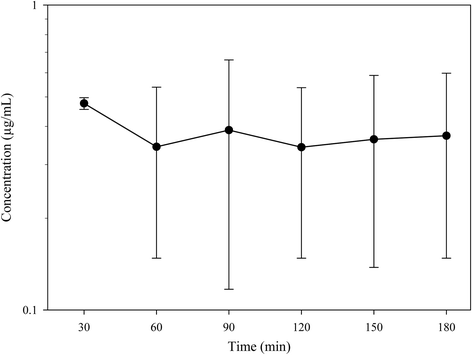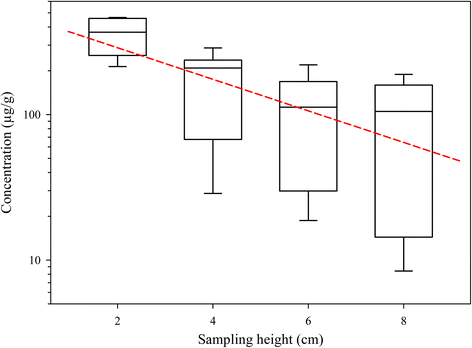Systemic and mammary gland disposition of enrofloxacin in healthy sheep following intramammary administration
- PMID: 25889369
- PMCID: PMC4396189
- DOI: 10.1186/s12917-015-0406-9
Systemic and mammary gland disposition of enrofloxacin in healthy sheep following intramammary administration
Abstract
Background: Mastitis is one of the most important diseases affecting dairy sheep. Antimicrobial drugs are often administered directly through teat to treat or prevent this disease, but data on drug distribution within glandular tissue are scarce and it cannot be estimated from concentrations in milk. Thus, the aim of this study was to investigate systemic and mammary gland distribution of enrofloxacin after intramammary administration. The drug was administered to 6 healthy lactating Assaf sheep with an injector containing an enrofloxacin preparation (1 g drug/5 g ointment). Blood samples were collected at 0, 30, 60, 90, 120, 150 and 180 min. Animals were then sedated and sacrificed, and glandular tissue samples were obtained from treated udders at 2, 4, 6 and 8 cm height. Enrofloxacin concentrations were measured in plasma and tissue samples by UV high-performed liquid chromatography.
Results: Mean enrofloxacin plasma concentrations were below 0.5 μg/mL. Mean tissue concentrations decreased in mammary gland with vertical distance from the teat, ranging from 356.6 μg/g at 2 cm to 95.60 μg/g at the base of the udder. Glandular tissue concentrations best fitted to a decreasing monoexponential model, and showed a good correlation with an ex vivo model previously developed.
Conclusions: Enrofloxacin concentrations were effective in the entire glandular tissue against the main pathogens causing mastitis in sheep. These results suggest that this drug may be suitable to treat mastitis in sheep by intramammary administration.
Figures


References
-
- Bergonier D, Berthelot X. New advances in epizootiology and control of ewe mastitis. Livest Prod Sci. 2003;79:1–16. doi: 10.1016/S0301-6226(02)00145-8. - DOI
-
- Contreras A, Sierra D, Sánchez A, Corrales JC, Marco JC, Paape MJ, et al. Mastitis in small ruminants. Small Rumin Res. 2007;68:145–53. doi: 10.1016/j.smallrumres.2006.09.011. - DOI
-
- Altreuther P. Data on chemistry and toxicology of Baytril®. Vet Med Rev. 1987;2:87–9.
Publication types
MeSH terms
Substances
LinkOut - more resources
Full Text Sources
Other Literature Sources
Medical

